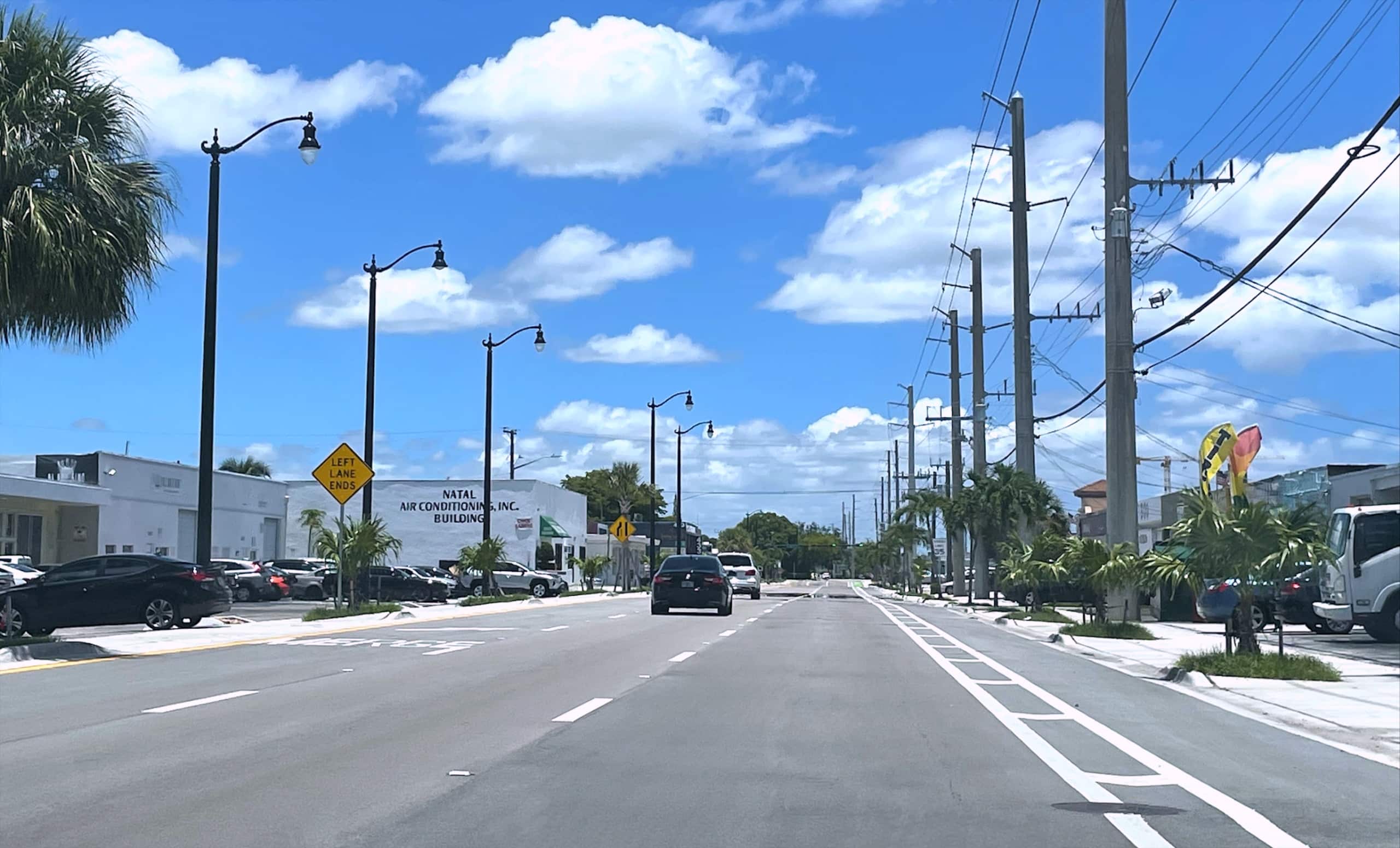The Pompano Beach City Commission recently approved a change to the city’s zoning code to incentivize well-designed mixed-use and mixed-income developments along the Dixie Highway corridor and along other specific commercial corridors within Pompano Beach.
The initiative began at the Pompano Beach Planning and Zoning Board meeting in February 2021, when Chair Fred Stacer started a discussion related to the city’s interest in beautifying the Dixie Highway corridor following the city’s investments in the roadway itself through the G.O. Bond program.
Stacer said the expectation of quality design for new development should increase. This discussion evolved into the creation of a Dixie Highway Task Force by the chair of the city’s economic development council, Tom DiGiorgio. Stacer was appointed as chair of the task force. The task force adopted the goal of creating mixed-income and mixed-use regulations for Dixie Highway, and ultimately, for all applicable commercial corridors of the city, with additional requirements and incentives in those areas where combatting poverty has been identified as a priority.
According to a study conducted on behalf of the city by the Lambert Advisory Group, Pompano Beach has the highest number of income-restricted housing units in the county (2,140 units), followed by Fort Lauderdale (1,941 units).

Dixie Highway corridor
Additionally, Pompano Beach has the third-highest proportionate share of income-restricted units to non-income-restricted units in the County — for every 25 residential units in Pompano Beach, one unit is income-restricted. A large proportion of income-restricted units are being developed in census tracts where there is already a high concentration of existing rent-restricted or subsidized units.
The new change to the city’s code uses criteria set forth in the affordable housing incentive policy that Broward County adopted in March 2021. It also integrates the mixed-income housing policy the city adopted in December 2021 to encourage affordable housing and provide relief from the adverse impacts of the concentration of income-restricted housing within Pompano Beach.
The County’s policy allows additional density (more dwelling units per acre) in residential land use categories and unlimited density in “Commerce” and “Activity Center” land use categories for projects on eligible roadways that include affordable housing.
The city’s new mixed-income housing policy intends to be more restrictive than the County’s policy: A minimum of 50% non-income-restricted residential units will be required in residential developments that are within a half-mile radius of an income-restricted residential development project.
Density for properties with a B-3 Commercial zoning, which is predominant along the commercial corridors, will be regulated by the city’s zoning code.
Along Dixie Highway (between city limits) and North Powerline Road (between Atlantic Boulevard and NW 15th Street), a minimum of 80% non-income-restricted residential units will be required. The city would provide a minimum 50% density bonus as an additional incentive to redevelop those properties inclusive of the non-income-restricted units.
The new regulations also set design standards that must be maintained by all development along these commercial corridors, including light industrial uses such as warehouses, which are permitted along corridors like Dixie Highway. In addition, a screening requirement was added for visible parking garage façades, as recommended by Stacer.
In addition to Dixie Highway and Powerline Road, the eligible commercial corridors within the city where the new regulations can be applied include Federal Highway, Sample Road, Copans Road, NW 31st Avenue, Atlantic Boulevard and McNab Road west of Dixie Highway, a portion of Andrews Avenue, and the western portion of MLK Boulevard.
Only properties that have a Commercial land use designation and are abutting those corridors will be eligible to receive residential entitlements through the County’s policy.
Speaking to the City Commission at its March 22 meeting, Stacer said he talked extensively with the redevelopment team of John Knox Village to make sure the three blocks that abut Dixie Highway from SW 3rd Street to SW 6th Street were properly integrated into the city’s new policy for the commercial corridors, as well as the desires of John Knox Village.
Stacer told the Commission the new policy “is probably going to be cutting edge for the county.”
Deerfield Beach city officials have taken interest in it, and in the future, there may be opportunities for Pompano to coordinate with them regarding what happens on the Dixie Highway corridor, said Stacer.
Stacer noted that the new guidelines will bring the city’s corridors into the 21st century design criteria, and will help protect single-family residences from the “massive amount of pressure” the city is going to experience due to an increase in population.
“This sets the stage for years to come,” said Mayor Rex Hardin. “It’s not going to transform any roadway today, but this will help guide development in the future for many, many years.”
[elementor-template id=”13910″][elementor-template id=”13903″][elementor-template id=”13902″][elementor-template id=”13901″]

